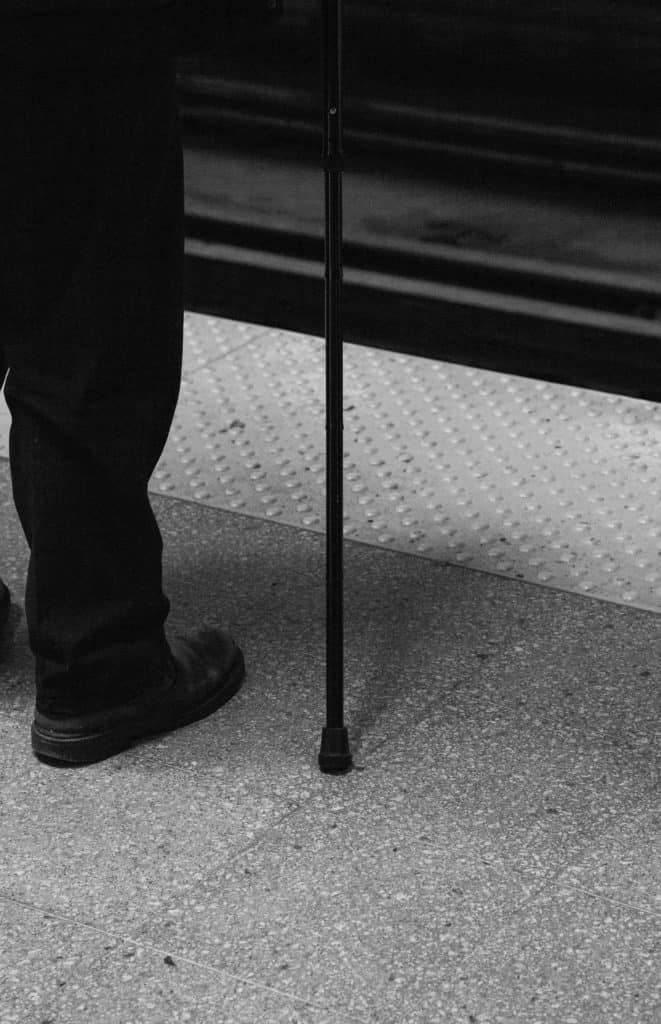Affordable housing is an ongoing problem all across the United States and is a major issue on the campaign trail for 2020 Democratic presidential candidates. While more people are talking about affordable housing, access to integrated housing for people with disabilities is often undiscussed. But a conversation about affordable housing for low- and moderate-income (LMI) families must consider accessibility. According to Cornell University’s Disability Statistics, it is estimated that 12.7% of Americans have a disability as of 2017. Moreover, 26.1% of non-institutionalized people between the ages of 18-64 years old with disabilities are in poverty; whereas only 10.1% of non-institutionalized, non-disabled people between the ages of 18-64 live in poverty.
Accessible and affordable housing is a prevalent issue in major cities. In 2016, Philadelphia was found to have the highest disability rate among the ten largest cities in the U.S. with 16% of Philadelphians identified as having a disability. In addition, 22% of Philadelphia’s lower-income people have a disability, which is almost twice the national average.
Liberty Resources is taking action to address this gap in affordability and accessibility. Liberty Resources is an NCRC member organization and an Independent Living Center that provides direct services for people with disabilities who are living independently. They offer courses on nutrition, health, safety and managing a personal attendant. Additionally, they advocate for solutions to issues that people with disabilities face on the state and national levels. Liberty Resources believes that there is an “institutional bias in this country” to place people with disabilities into nursing homes rather than supporting and encouraging them to be active members of the community.
But the lack of affordable, accessible and integrated housing prevents people from being able to stay in their communities or re-enter their communities from a nursing home. According to the Philadelphia Coalition for Affordable Communities’ 2017 report, 23,000 affordable units had been lost in the city between 2000 and 2014, yet there had also been an explosion of market-rate development, and approximately 2,300 market-rate units were built every year from 2011 to 2016. People with disabilities are two times more likely to experience sheltered homelessness and housing insecurity, and nearly 50% of people experiencing homelessness identified as having a disability.
Even if there is affordable housing available in the region where a person with a disability lives, there is no guarantee that the home is physically accessible to them, which makes finding adequate housing much more difficult. According to HUD’s Accessibility of America’s Housing Stock: Analysis of the 2011 American Housing Survey (AHS), less than 1% of housing units are accessible to wheelchair users and “less than five percent [are] accessible for individuals with moderate mobility difficulties.” People living with a disability, while residing outside of a nursing home, often have different physical requirements for their housing. People who use wheelchairs or walkers may need widened doorways, grab bars in the bathroom, lowered counters or outlets, etc.
Accessibility is not just about physical barriers, but financial ones as well. One in four people with a disability face barriers within the workforce. Many rely on Supplemental Security Income and Social Security Disability Insurance in order to survive. As of January 2020, the maximum monthly federal SSI payments are $783. In July 2019, median rent prices in Philadelphia were $1,614 a month, making market-rate housing a far reach for many people with disabilities. The expansion of affordable housing is more important than ever for the city.
People with disabilities also require housing that is integrated. Like anyone, people with disabilities want to live in their community and have the same opportunities as their non-disabled counterparts. According to Liam Dougherty, Liberty Resources’ Policy Advocate, “the writing on the wall is that [disabled] people prefer living in the community.” But the absence of affordable and accessible housing prevents people living with disabilities from doing just that.
Liberty Resources is working to help make affordable housing a reality in Philadelphia. They have actively advocated for the Housing Trust Fund and the Philadelphia Land Bank. The Housing Trust Fund supports developments that target households that make 30% of the Area Median Income (AMI). This funding is used for new construction, homeless prevention and rehabilitation projects. In 2013, the city of Philadelphia created the Philadelphia Land Bank with the goal of “reactivating publicly owned vacant land.” However, Dougherty said that the Land Bank has been “slow so far” and the “city hasn’t maximized the potential there.” Recently, Philadelphia City Council Member Derek Green presented a bill that would help the city preserve affordable housing by requiring “landlords who own apartments where affordability regulations are going to expire to present the city with their plans for the buildings two years in advance” to give the city enough time to respond to the potential loss of affordable housing units.
Liberty Resources is making substantial strides in making sure that the city’s response to their affordability crisis includes people with disabilities. Hopefully, as Philadelphia moves forward, developers, lawmakers and advocates will make sure that housing is affordable and accessible.
Mythea Mazzola was a communications and development intern at NCRC.
Photo by Charles Deluvio on Unsplash



